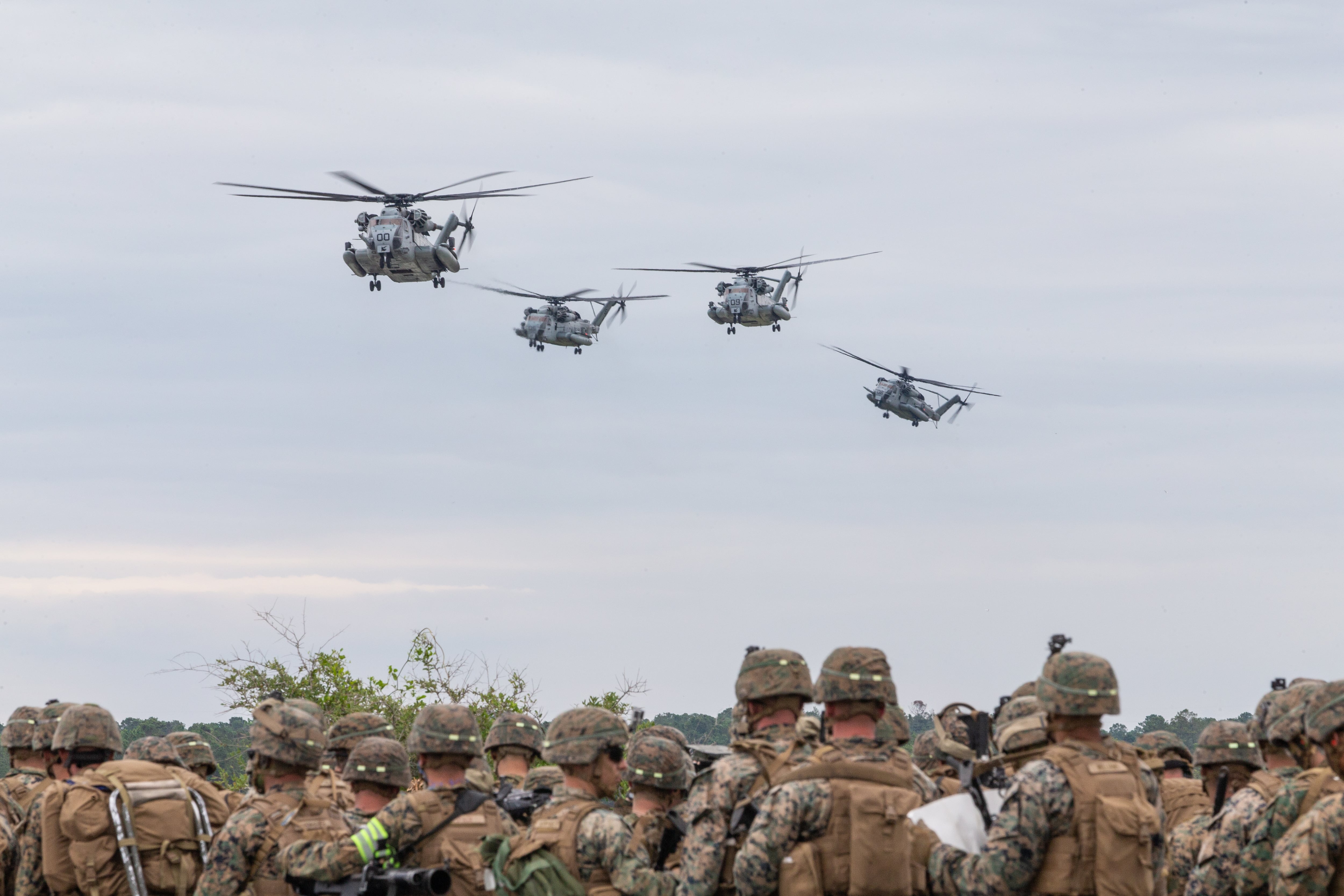Marines with the 5th Marine Regiment recently completed the largest combat evaluation of the unit since the Corps changed standards to the test, including adding more than seven miles to the hike.
The 1st and 2nd Battalions with 5th Marine Regiment, 1st Marine Division, did a 20-mile hike with a 70-pound assault load in under eight hours before starting tactical events at Camp Pendleton, California, over a 10-day exercise that took place in late September.
The “regiment-sized” maneuver was not the first unit to complete the new Marine Corps Combat Readiness Evaluation test since changes were signed in February and announced in April.
But, 1st Lt. Cameron Edinburgh, spokesman with 1st Marine Division, confirmed to Marine Corps Times that it was the largest unit to conduct such an evolution since the changes.
RELATED

It marks a recent trend in Marine Corps exercises to get larger formations moving at distance in tactical scenarios.
Back in June, Marine Corps Times reported from Camp Lejeune, North Carolina, when nearly 500 Marines conducted the largest Marine air assault in decades as part of Exercise Steel Pike. That included Marines from 2nd Marine Regiment, 2nd Marine Division.
Both divisions are expected to be able to conduct Marine Expeditionary Force-level maneuvers against near-peer adversaries in their respective areas. That includes Russia for the European theater on the East Coast and China for the Pacific theater for the West Coast.
Marine Corps officials did not immediately respond with information on the last time a Marine regiment conducted a MCCRE at scale. But larger-scale maneuvers were more common a generation ago when the looming threat of the Cold War was the Soviet Union.
A shift to smaller conflicts in the 1990s and the decadeslong counterinsurgency and counterterrorism conflicts of Iraq and Afghanistan have seen mostly Marine Expeditionary Unit-sized rotations or even smaller with Special Purpose Marine Air Ground Task Forces assigned to limited missions.
The new standard also added a tactical exercise, emphasizing that the march would not be a standalone event.
And the changes don’t just effect “load-bearing units” such as grunts. Those attached to infantry will be expected to perform at standard.
Other units in ground combat will now have to do forced timed marches as well.
That includes, but isn’t necessarily limited to, combat engineer battalions, light armored reconnaissance battalions, tank battalions, air and naval gunfire liaison companies, artillery regiments, assault amphibian battalions and low altitude air defense battalions.
They’ll have to move 15 km with 55 pounds in under four hours. Artillery, tanks, Assault Amphibious Vehicle Marines and engineers already had a four-hour, 15 km hike requirement in their manuals.
The loads for grunts are: 55 pounds for a fighting load, 70 pounds for assault load, 90 pounds for approach march load and 150 pounds for sustainment load.
Edinburgh told Marine Corps Times in an email response that detailed results of the evaluation were official use only data and could not be shared.
“Still, we can say that for this MCCRE, 5th Marine Regiment, which included the Regimental Headquarters, 1st Battalion, 5th Marines, and 2nd Battalion, 5th Marines, executed an extremely challenging Combat Readiness Evaluation to become certified for deployment,” Edinburgh wrote.
The Marines involved conducted the 20-mile, or 32 km, march with their mission essential gear and equipment then “immediately transitioned to a simulated combat environment with a near-peer adversary force,” which consisted of 2nd Battalion, 4th Marines.
The MCCRE isn’t only a hike, it tests a unit’s ability to complete core tasks in a tactical setting, which could range from amphibious assault to supporting fires to a nuclear, biological, chemical attack defense or other tasks.
Units are required to undergo a MCCRE every two years or once during a deployment cycle.
Todd South has written about crime, courts, government and the military for multiple publications since 2004 and was named a 2014 Pulitzer finalist for a co-written project on witness intimidation. Todd is a Marine veteran of the Iraq War.




